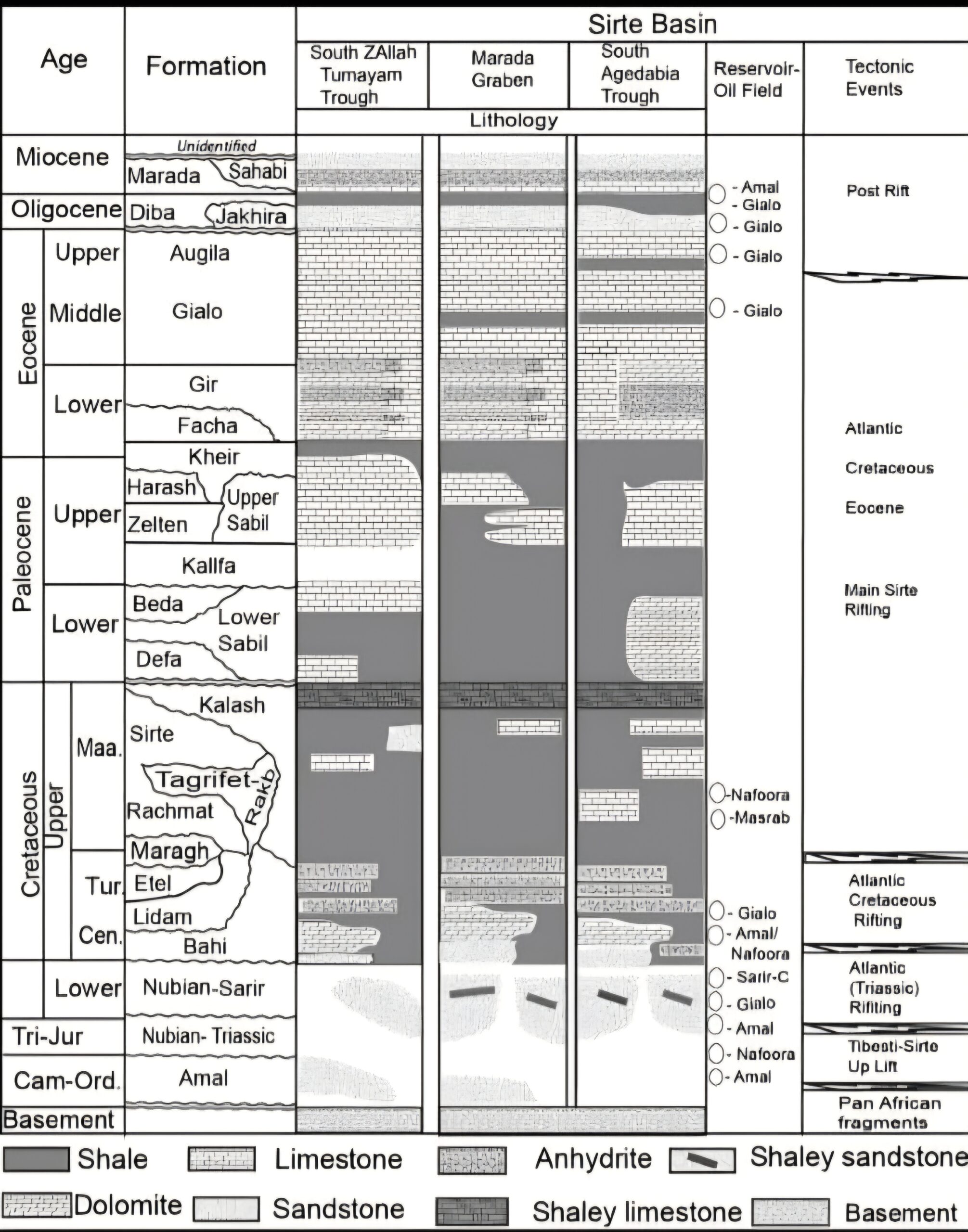Country Overview Series | Upstream Geology of Libya
By Dr. Mohamed Basyouni Anwar
Overview:
Libya is a leading oil producer, yielding around 1.7 MMBOPD, with 44+ billion barrels of recoverable oil and 37 TCF of gas. Nearly 80% of its reserves were discovered before 1970, underscoring its long-standing role as North Africa’s petroleum powerhouse.
Main Sedimentary Basins:
Libya hosts four major hydrocarbon provinces — Sirt, Ghadamis, Murzuq, and Tripolitania (Pelagian) — accounting for over 320 producing oil fields.
Sirt Basin dominates with ~89% of reserves and 16 giant oil fields, followed by Ghadamis, Tripolitania, and Murzuq.
The Cyrenaica Platform and Al Kufrah Basin remain underexplored but show promising potential.
Basin Highlights:
Sirt Basin: Cretaceous–Paleocene reservoirs; Upper Cretaceous Sirt & Rachmat Shales as sources. OOIP ≈ 117,000 MMB, recoverable ≈ 36,700 MMB.
Murzuq Basin: Ordovician–Carboniferous sandstones; Tanezzuft & Uennin Shales as sources. OOIP ≈ 5200 MMB, recoverable ≈ 1600 MMB.
Ghadamis Basin: Triassic–Devonian reservoirs; Tanezzuft and Devonian Shales as sources. OOIP ≈ 3850 MMB, recoverable ≈ 950 MMB.
Northwest Offshore: Eocene–Ordovician systems; Agrub–Turghat and Tanezzuft sources. Recoverable ≈ 1500 MMB.
Source & Reservoir Systems:
Main source rocks: Silurian Tanezzuft Shale and Upper Cretaceous Sirt Shale (Type II kerogen).
Reservoirs range from Precambrian to Eocene, with sandstone and carbonate facies representing ~95% of Libya’s reserves.
Tectonic Framework:
Libya’s structure reflects multiple tectonic phases:
• Pan-African Orogeny: Regional uplifts (Tihemboka, Haruj).
• Hercynian (Late Carboniferous): Formed Sirt Arch & Gargaf High.
• Mesozoic Rifting: Created Sirt & Cyrenaica Basins, hosting prolific traps.
Exploration Outlook:
Exploration began in 1953, and within a decade Libya added 27 billion barrels of reserves.
Yet 80% of the country remains underexplored, with strong potential in:
• Ajdabiya, Maradah, Zallah Troughs (Sirt Basin)
• Offshore Sirt Basin
• Cyrenaica Platform & Murzuq Frontier Zones
The National Oil Corporation (NOC) plans to open 360+ blocks, targeting 20 billion additional barrels via seismic and drilling expansion.
Conclusion:
Libya’s geology combines mature producing basins with vast frontier potential. Supported by strong NOC initiatives and renewed international interest, it remains one of North Africa’s most promising petroleum frontiers.

Stratigraphic column of the Sirte Basin highlighting the lithologies of the formations, the reservoir units of the oil fields demonstrates age, formations, lithology, main reservoir-oil fields and its tectonic events. Modified from Barr and Weeger (1972), Burwood et al. (2003) and Aboglila et al. (2010).
Source publication




